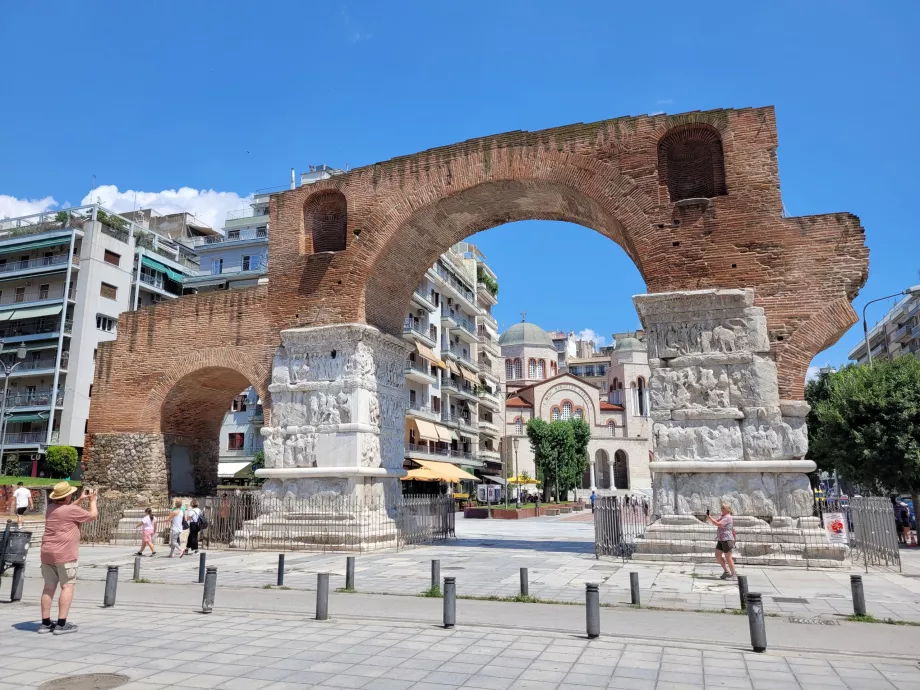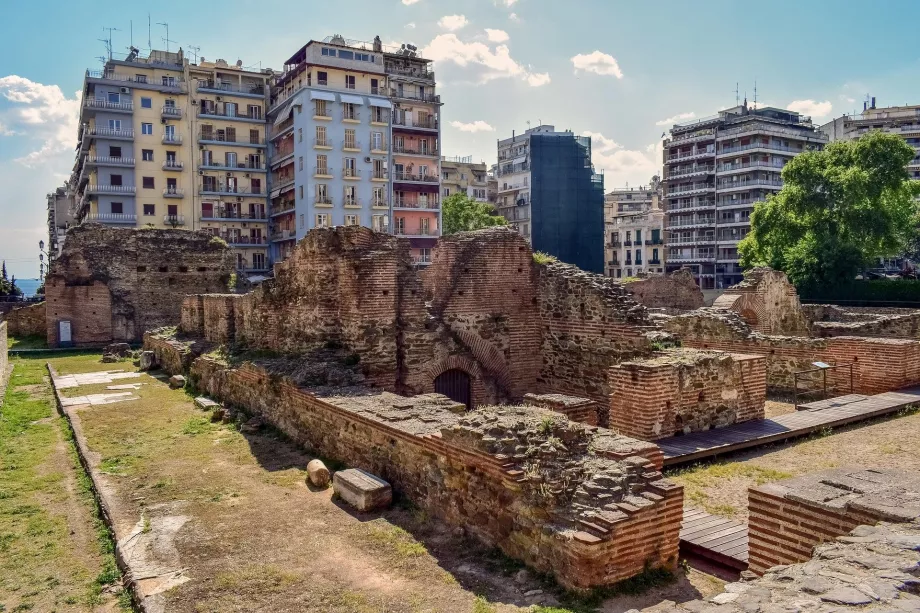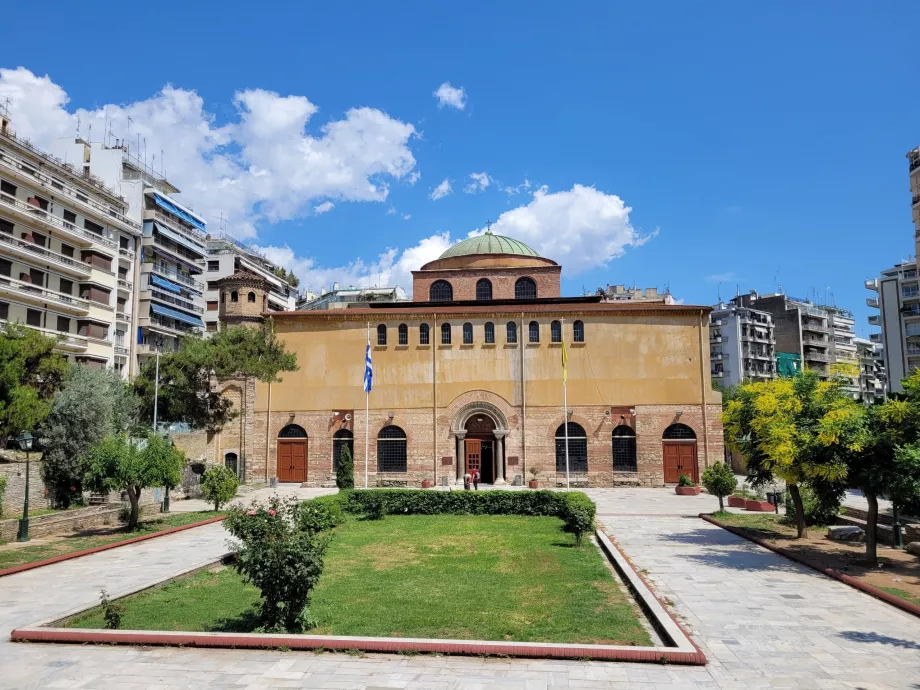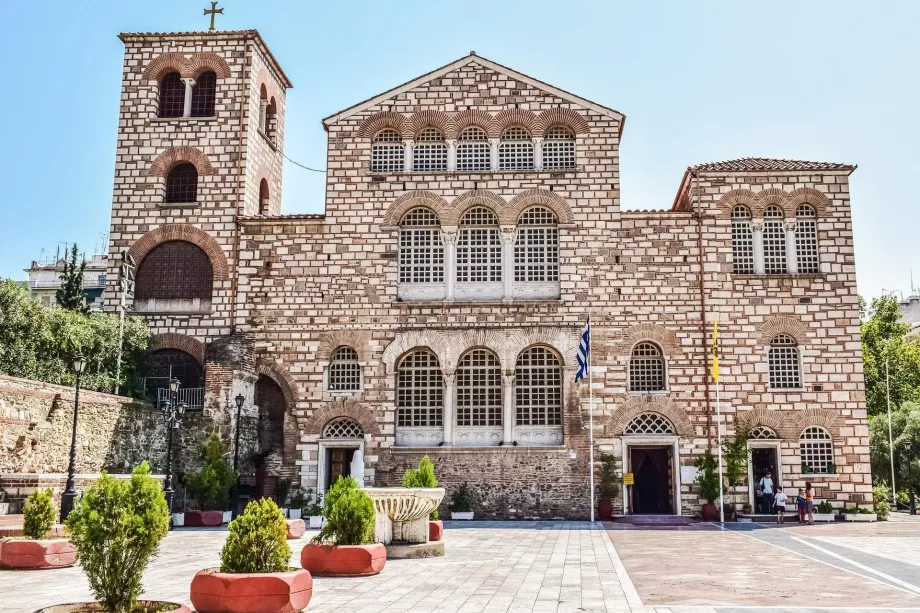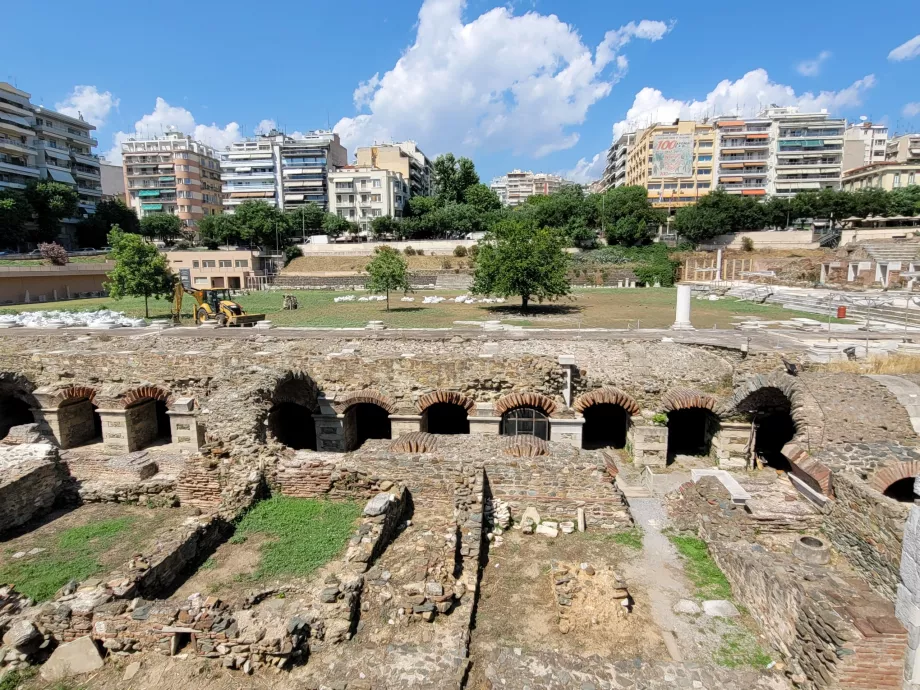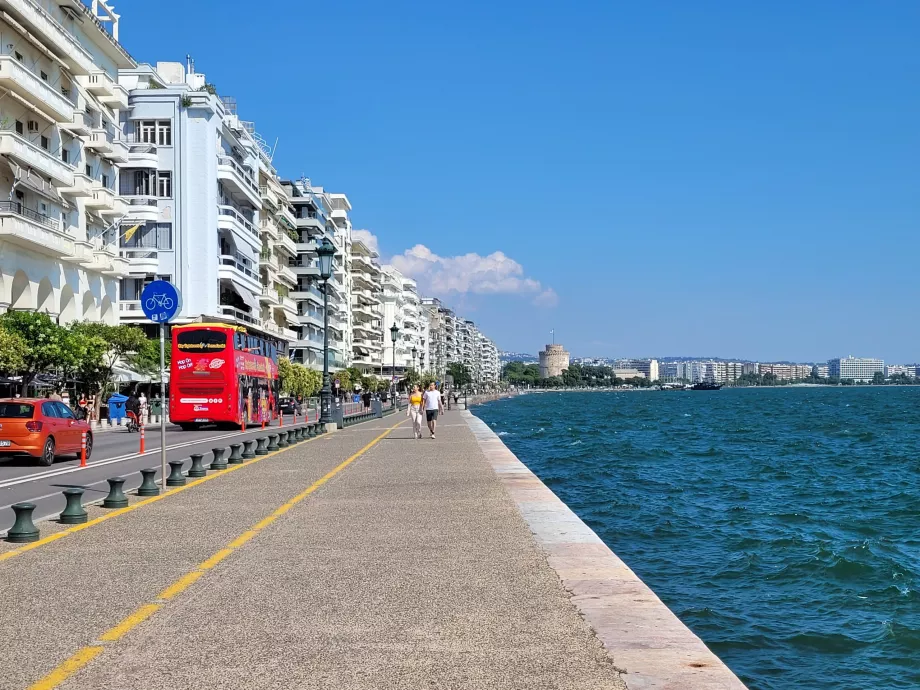Rotunda
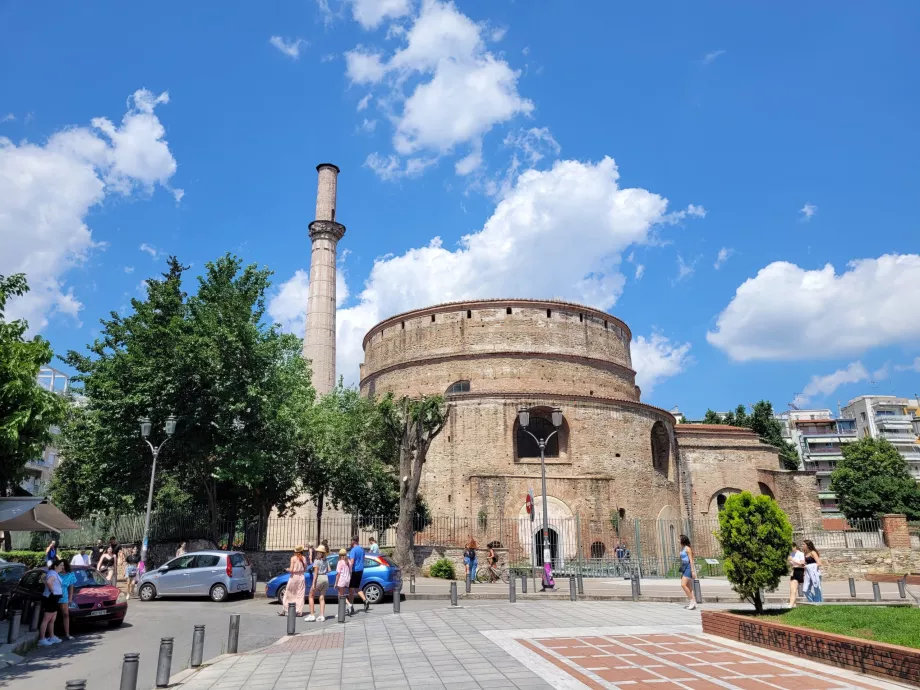
The circular rotunda originally connected to the Arch of Galerius is an extremely interesting building and certainly one of the most important Roman monuments of Thessaloniki. After the White Tower, the Rotunda is one of the most visited monuments of the city.
Book a hotel in the centre of Thessaloniki
The Rotunda is extraordinary not only for its well-preserved appearance, but also for its turbulent history, during which it has changed several purposes. The Rotunda is a UNESCO World Heritage Site.
The Mausoleum of Galerius
The building was built in 306 on a circular plan with a diameter of 24.5 metres and 6 metre thick perimeter walls. Historians still argue about the true purpose of the rotunda.
Some claim that the Roman emperor Galerius had it built as his own mausoleum and family tomb, while others promote the idea that the structure was intended as a temple to celebrate and build the cult of the popular emperor.
Either way, Galerius died outside Thessaloniki and the building has since fallen into disrepair.
From cathedral to mosque
During the 4th century, the Emperor Theodosius had the building rebuilt as a Christian temple dedicated to St. George (Agios Georgios). The rotunda was enlarged and, above all, acquired a magnificent interior decoration.
The dome was decorated with coloured mosaics on a golden background and the walls were lined with marble. This beautiful decoration can still be seen in the rotunda today and is the main attraction for a visit.
The rotunda served as a Christian temple until the 15th century, when the Ottomans took over the region of Macedonia and Thessaloniki and converted the building into a mosque in 1590. The common practice of the Turks at that time was to leave the church in its original form and only add a minaret.
In 1912, after Macedonia came under Greek rule, the mosque was again converted into a Catholic church. In the vast majority of cases, the minarets were removed after the fall of the Ottoman Turks, but this was not the case with the Rotunda of Thessaloniki.
You can still admire the unique combination of Christian-Muslim architecture today. The Rotunda still functions as the Catholic Church of St. George, but the minaret remains and forms its skyline.
Admission and opening hours
The Rotunda is open to the public from 8:00am-8:00pm and due to its well-preserved interiors, we definitely recommend a visit. The church is closed on Tuesdays.
Admission is 6 eur.
How to get to the Rotunda?
The church stands at the end of the nice pedestrian area of Dimitros Gounaris leading from the seaside promenade (about 5-7 minutes walk from the sea).
The nearest bus stop "Kamara" is located on the main Egnatia street about 200 meters from the rotunda. Bus lines 1X, 2, 2A, 8, 10, 11, 11B, 14, 17, 27, 28B, 31, 37, 45, 45A, 45B, 83B, 83M, 83T stop here.
What to see around
Discover all the places to see in Thessaloniki.
Any questions left?
If you have any questions or comments about the article...

